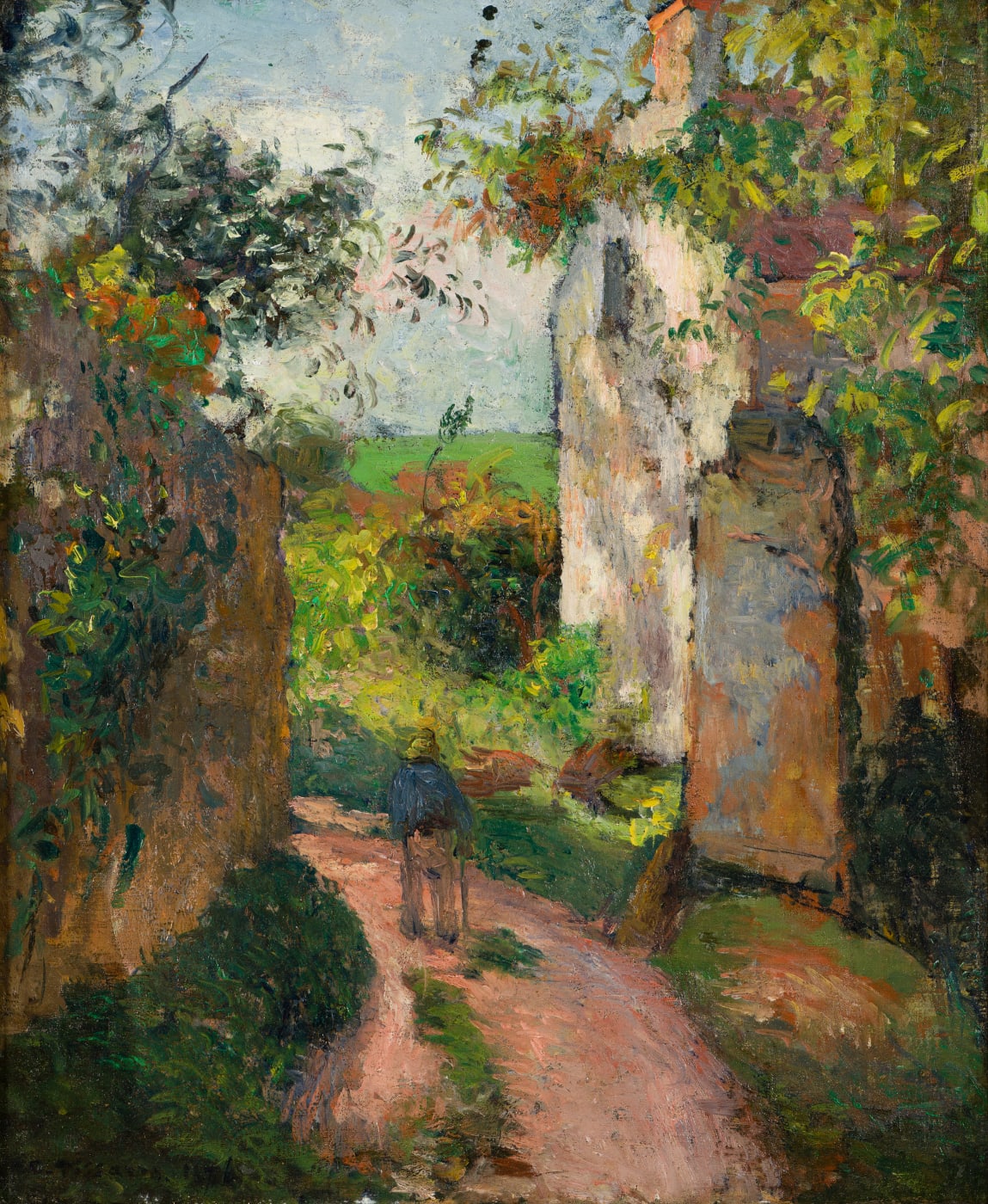Vue sur la Maison des Mathurins, Pontoise, 1875
Camille Pissarro
Painted in 1875 between the first and second Impressionist exhibitions, Vue sur la Maison des Mathurins, Pontoise belongs to Camille Pissarro’s vast body of work capturing the French rural town of Pontoise in the north-western suburbs of Paris. The painting depicts the former convent of the Order of the Holy Trinity in the section of L’Hermitage, which was rented by Maria and Anna Deraismes, two sisters who played a leading role in the intellectual, political and social life of the time. Fellow French artist Paul Cézanne painted a corresponding view of the house from around the same time (1875-1877, The State Pushkin Museum of Fine Arts, Moscow), which demonstrates a clear affinity to the present work. Both paintings are testament to the intense pictorial dialogue between the two artists that had





